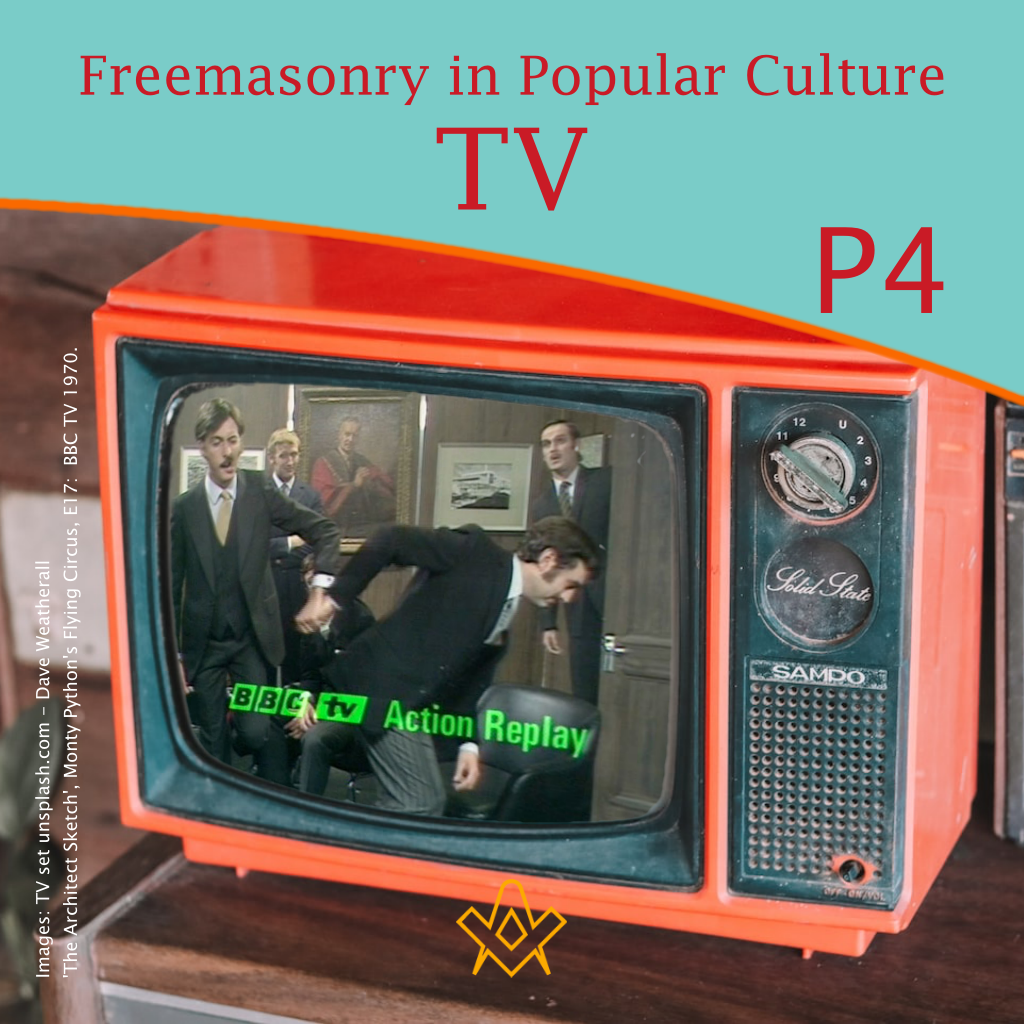With much intrigue into the supposed machinations of the Freemasons within business, politics and the police force, television is a ripe medium for ridicule and sensationalist anti-Masonic propaganda.
The comedy features are ostensibly satire, and are quite humorous in most cases, but the inclusion of Masonic police corruption tropes have sadly negatively influenced the general public for decades, and continues to this day.
If it was any other minority involved, it would no doubt be classed as ‘hate speech’.
However, why discrimination against Freemasons is still allowed, nay encouraged, is a subject for another article.
Comedy & Satire
Monty Python’s Flying Circus
John Cleese, Graham Chapman, Terry Jones, and Michael Palin in their usual inimitable style, parody Freemasons in two sketches from Episode Seventeen: ‘The Buzz Aldrin Show’, in 1970.
Probably the most patently absurd depictions of Freemasons on TV were featured in ‘The Architects Sketch’ and ‘How to Recognise a Mason’ – the Pythons don’t pull any punches and reinforce the public image of Freemasonry as a) a corrupt ‘Old Boys’ network, and b) ridiculous.
In ‘The Architects Sketch’, Mr Wiggins (Cleese) is bidding for a contract to design a block of flats; after they reject his bizarre pitch, he is seen losing his temper and berating the firm of architects for being Freemasons and accusing them of blackballing him; he begs to join, only to be turned away.
Mr Wiggin: ‘…if one of you could put in a word for me, I’d love to be a freemason. Freemasonry opens doors. I mean, um, I…I was a bit on edge just now, but…but if I was a mason, I’d just sit at the back and not get in anyone’s way.’
CITY GENT #1: Thank you.
MR. WIGGIN: I’ve got a second-hand apron.
CITY GENT #2: Thank you.
(Mr. Wiggin hurries to the door but stops…)MR. WIGGIN: I nearly got in at Hendon.
CITY GENT #1: Thank you.
Enter another candidate who offers a completely substandard design and gets the contract
– the ‘Masonic’ handshake is given…
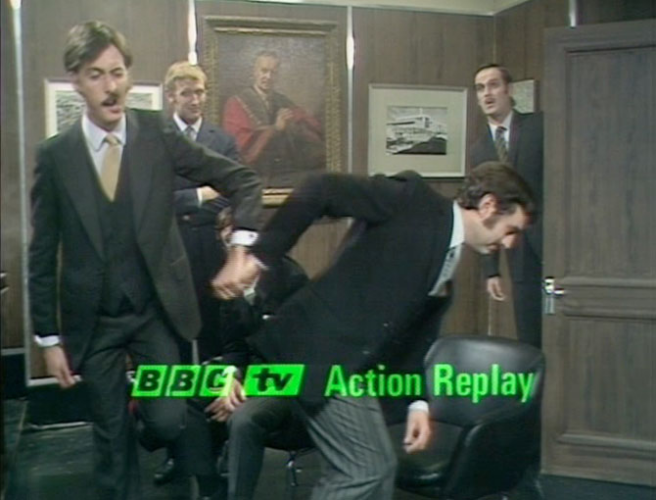
The Architect Sketch’, with John Cleese, Graham Chapman, Terry Jones and Michael Palin. Monty Python’s Flying Circus, E17: The Buzz Aldrin Show,
IMAGE LINKED: BBC TV 1970. Image: Fair Use
MR. WIGGIN (to camera): It opens doors, I’m telling you.
Voice Over: Let’s have a look at that handshake again in slow motion.
CAPTION: ‘BBC TV ACTION REPLAY’
They do the handshake again, only slowly.First Voice Over: What other ways are there of recognizing a mason?
In the following scenes they advise on ‘How to identify a Mason’ and ‘How to give up being a Mason’:
Scene: A busy London street – four city gents are leaping along with their trousers round their ankles, wearing bowler hats and pinstripes… another part of the same street, two city gents, with trousers rolled up to the knee, approach each other and give each other the most extraordinary handshake which involves rolling on the floor etc.
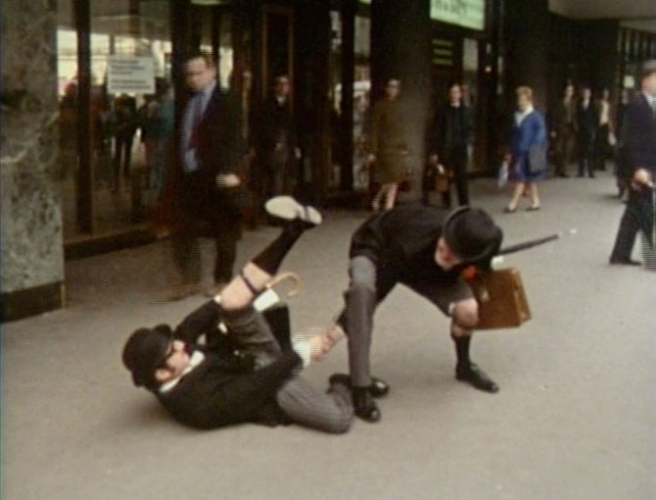
Terry Jones and John Cleese. ‘How to Give up being a Mason’ Monty Python’s Flying Circus, E.17
IMAGE LINKED: BBC TV 1970. Image: Fair Use
Cuts to Graham Chapman queuing for a bus, sporting ridiculously oversized deer antlers sprouting from a bowler hat and smoking a cigar; he is partially naked except for socks, boots, a Masonic apron and a sash emblazoned with ‘I’m a Mason’…
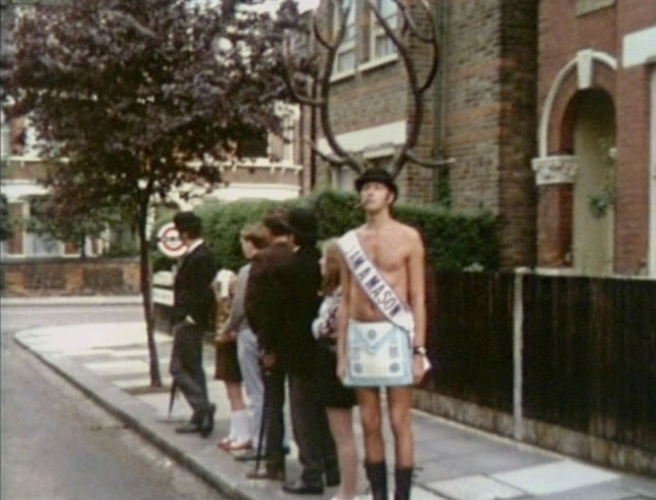
Graham Chapman in ‘How to Give up being a Mason’. Monty Python’s Flying Circus, E.17
IMAGE LINKED: BBC TV 1970. Image: Fair Use
Voiceover: Having once identified a mason immediate steps must be taken to isolate him from the general public. Having accomplished that it is now possible to cure him of these unfortunate masonic tendencies through the use of behavioural psychotherapy (a cartoon city gent is seen locked into a cell). In this treatment the patient is rewarded for the correct response and punished for the wrong one. Let us begin. Would you like to give up being a mason? Think carefully. Think. Think.
Cartoon City Gent: No.
The final scene shows an animated hammer attacking the Mason…
Voice Over: No? That’s wrong! Wrong! Wrong! Wrong! No! No! No! Bad! Bad!
Then in Episode 18:
Live from the Grill-o-Mat Snack Bar, there is a sketch entitled ‘Blackmail’:
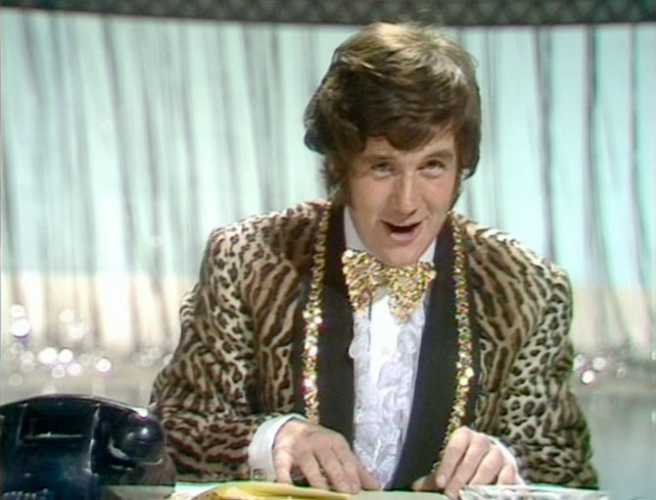
‘Blackmail’, with Michael Palin. E.18: ‘Live From the Grill-o-Mat Snack Bar’. Monty Python’s Flying Circus, 1970.
IMAGE LINKED: BBC TV 1970. Image: Fair Use
Presenter: (as he speaks, he holds up the various items) And now…a letter…a hotel registration book…and a series of photographs…which could add up to divorce, premature retirement, and possible criminal proceedings for a company director in Bromsgrove.
He’s a freemason, and prospective Tory MP, that’s Mr S. of Bromsgrove…£3,000…
SUPERIMPOSED CAPTION: ‘£3000’ (which flashes on and off) …to stop us from revealing your name, the name of the three other people involved, the youth organization to which they belong, and the shop where you bought the equipment.
Toast of London
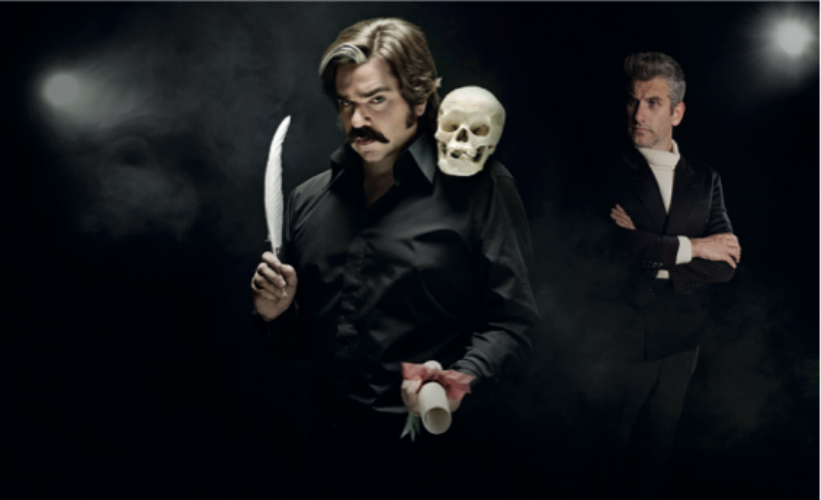
‘High Winds Actor’, Toast of London.
IMAGE LINKED: Courtesy of Objective Fiction.
Toast of London is a wonderfully absurd award-winning comedy series co-written by, and featuring Matt Berry as struggling actor and voice-over artist, Steven Toast.
In ‘High Winds Actor’ (S2, e4, 2014) one of the main themes is that of actors being Masons and when ‘high winds’ performer (and Mason) Axel Jacklin dies, Toast is up for the leading role in a film.
However, on discovering that all the other actors and director – including Toast’s arch-nemesis, Ray Purchase – are Freemasons, he has to pretend he is ‘on the Square’.
Realising he must quickly join in order to secure the role, he makes a hurried visit to a dubious East End address to pay his £27.50 ‘fast-track’ dues, he is accepted into a lodge and undergoes his initiation.
However, his plan falls through when he is exposed by fellow Mason Ray Purchase as having joined just to get the acting job, thus losing him the part.
It is probably one of the most gently amusing, tongue-in-cheek renditions of a Masonic meeting; yet aside from the usual ‘goat’ jokes and trouser rolling, there are some bits that do seem strangely accurate, making one wonder if there was indeed a Mason on the show!
Police TV Dramas
There was a penchant for Masonic conspiracies and corruption in many of the police and detective dramas that fall within the 1980s-1990s era. This harks back to the investigations into potential police/Masonic corruption from the 1960s onwards. The tarred brush has never been cleaned and even to this day, you will find negative references in association to the police and Freemasonry in film and drama.
Inspector Morse (1987-2000)
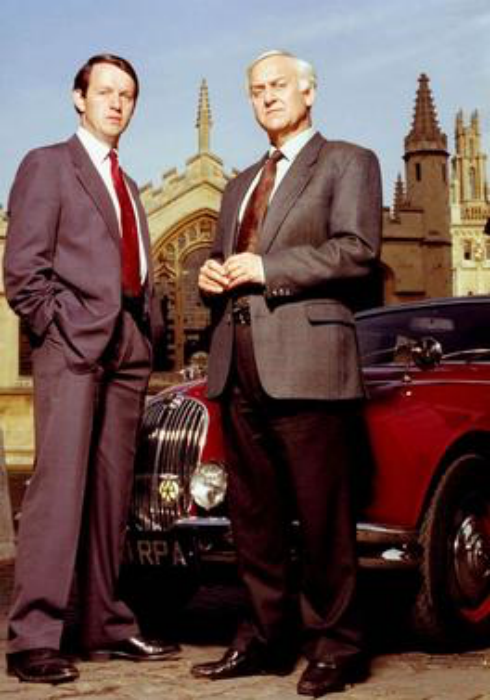
Inspector Morse (John Thaw) and Sergeant Lewis (Kevin Whately) ITV – mirror.co.uk
IMAGE LINKED: wikimedia Attribution 4.0 International (CC BY 4.0)
Inspector Morse (played by the late John Thaw) always had an ill-concealed disdain for Freemasonry.
Throughout the series, there are references) veiled or otherwise to purported corruption and/or his colleague Detective Chief Superintendent Strange’s membership of the Order.
The character of Strange appears in much of the Inspector Morse series (and in its prequel Endeavour; in which, during the second series, he becomes a Freemason).
Morse stresses that he has no interest in becoming a Mason, even though Strange offers to be his proposer.
However, Morse seems to have a good knowledge of Masonry and one episode entitled ‘Masonic Mysteries’ the plot follows three unrelated story arcs, which all have a Masonic theme.
A psychotic killer frames Morse for a murder and vandalises his beloved car with Masonic symbols.
Further to this it highlights that several police officers (including Strange), the investigating officer and a traffic officer, are all Freemasons; and an amateur production of Mozart’s opera The Magic Flute, in which Morse is to perform, offers more Masonic influence.
Morse’s love of opera is well-documented and in almost all episodes his office wall has a poster of the Magic Flute, in which a square and compasses is present.
Endeavour Season 2
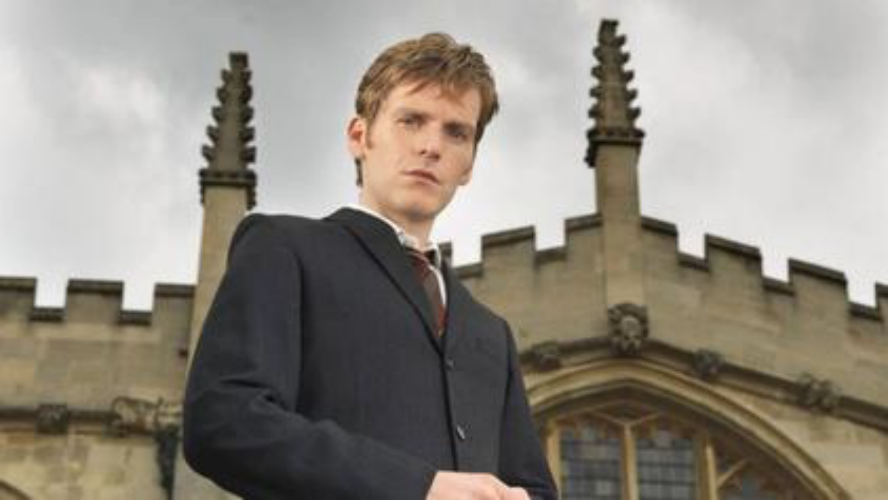
Shaun Evans (Morse) in ‘Endeavour’. Radio Times promotional material, Fair use
IMAGE LINKED: wikimedia Attribution 4.0 International (CC BY 4.0)
This prequel to ‘Inspector Morse’ set in the 1960s, sees the younger Endeavour Morse (Shaun Evans) up against the supposedly nefarious and corrupt goings on between the police and Freemasonry and appears to explain Morse’s dislike of all things Masonic:
Series 2 begins in 1966 with Morse returning to active duty at Cowley police station, after spending several months on light duty at Oxfordshire (County) Police’s Witney station, under the direction of DI Bart Church. Morse is received warmly by Ch Supt Bright and DS Jakes, as DI Thursday begins to keep a more watchful eye on him.
As a delayed result of being shot, Morse begins to suffer from stress, and paranoia and increases his alcohol consumption.
Despite making several mistakes in the investigation, Morse solves the case, impressing his superiors.
During the investigation he suffers concussion after being struck over the head and is cared for by his nurse neighbour, Monica Hicks, in whom he takes an interest.
At the same time, PC Strange enters into Freemasonry with many of Oxford’s elite, and DI Thursday’s daughter, Joan, begins to take an interest in Morse.
During the course of several cases, pieces of circumstantial evidence go missing, and a murder suspect threatens Morse by claiming association with powerful men who will not take kindly to interference.
– Wikipedia
Prime Suspect
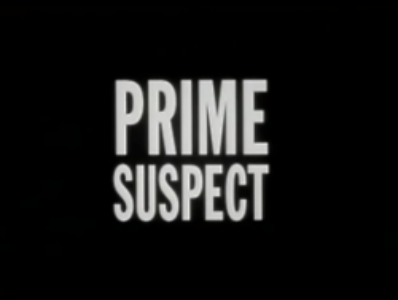
Image from Prime Suspect titles. Fair Use attribution.
IMAGE LINKED: wikimedia Attribution 4.0 International (CC BY 4.0)
Another popular police procedural drama series was Prime Suspect, set in the 1990s, featuring Helen Mirren as DCI Jane Tennison, who rises to the rank of Detective Superintendent ‘while confronting the institutionalised sexism that exists within the police force’; replete with references to ‘dodgy handshakes’ and people ‘getting leg-ups’.
Line of Duty
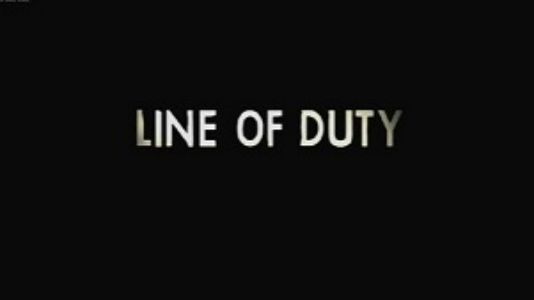
Title image, ‘Line of Duty’, BBC TV. Fair use
IMAGE LINKED: wikimedia Attribution 4.0 International (CC BY 4.0)
Line of Duty, a British police procedural series created for the BBC by Jed Mercurio, first aired in 2012. In Seasons 3 (2016) and 4 (2017) the subject of historical police corruption rears its ugly head.
Allegations of a cover up and alleged involvement in organised crime and sexual abuse of children by Masons in the force, are posited when the inevitable handshake is shown between two senior officers.
More references to the officers’ membership, Masonic misogyny and shadowy deals leads to the uncomfortable squirming of Superintendent Hastings, which does nothing for the perceived public opinion of ‘secret societies’ and their ‘dodgy secrets’.
This was compounded further by the disturbing use of an image of the alleged abusers (supposedly both from the same ‘lodge’) buddying up to Jimmy Saville at a charitable event.
We have to ask – what kind of message, unconscious or otherwise, does this give to the public?
Conclusion?
In conclusion, discrimination towards Freemasons is still fair game.
We understand that there is always the case for artistic licence, satire and free speech, and of course the fact that there have been documented cases of impropriety by men who happen to be Freemasons – but that does not mean that Freemasonry as an organisation is corrupt, nor does it deserve to be seen as such.
People from all walks of life, from all societies and institutions, of all races, creeds and sexual orientations are capable of offences, corruption and generally being deeply unpleasant, but it still seems that the flagrant discrimination of Freemasons is acceptable in the media and popular culture; yet this same discrimination would be outrageous if another minority group were continually portrayed in such a way.
This list is in no way exhaustive, and if anyone knows of an example in popular culture whereby Freemasons have been portrayed in a non- conspiring, non-corrupt and positive way, do let us know!
Sources:
Monty Python’s Flying Circus (text/scripts):
Chapman, Graham; Cleese, John; Gilliam, Terry; Idle, Eric; Jones, Terry; Palin, Michael (1989). Wilmut, Roger (ed.). The Complete Monty Python’s Flying Circus: All the Words, Volume One. New York, New York: Pantheon Books.
Sourced via: https://www.ibras.dk/montypython/episode17.htm#2
Images: Fair dealing/use under the COPYRIGHT ACT 1968 – SECT 41 Fair dealing for purpose of criticism or review. Attributions given.
Article by: Philippa Lee. Editor

Philippa Lee (writes as Philippa Faulks) is the author of eight books, an editor and researcher.
Philippa was initiated into the Honourable Fraternity of Ancient Freemasons (HFAF) in 2014.
Her specialism is ancient Egypt, Freemasonry, comparative religions and social history. She has several books in progress on the subject of ancient and modern Egypt. Selection of Books Online at Amazon
Recent Articles: Masonic Art series
 Experience the power of Masonic art like never before with our handpicked selection of NFT collections now available on Opensea. Discover stunning works of art from talented artists across the world, all inspired by the ancient traditions and symbols of the Freemasonry. Don't miss out on the chance to own a piece of history - start exploring our Masonic art NFT projects today! |
 Digital Freemasonry NFT Marketplace Unlock the digital realm of Freemasonry with our exclusive NFT marketplace, designed for the modern-day Masonic community. Become one of 333 founders of Digital Freemasonry and gain access to a range of cutting-edge digital tools for the craft. Own a unique NFT as confirmation of your contribution to this ground-breaking initiative. Join us in shaping the future of Freemasonry - start exploring our NFT marketplace now! |
 Experience the legacy of Tubal Cain like never before with our unique collection of Masonic apron NFTs. Each of the 1,000 digital designs are one-of-a-kind and serve as a symbol of Masonic pride and tradition. And for those who prefer to have a physical item, these designs are also available as collectible aprons. Don't miss out on this rare opportunity to own a piece of Masonic history - start exploring our Tubal Cain Masonic apron NFTs now! |
 Discover the transcendent power of music through the eyes of John Philip Sousa. In a world where beauty intertwines with divine inspiration, music becomes a celestial language. Sousa's belief in melodies born from higher realms challenges us to seek the profound, divine connection in our creative expressions. Let music elevate your soul. |
 In a world brimming with wonder, pain, and confusion, the concept of love transcends all boundaries. In this thought-provoking poem, the poet dives into the depths of existence, questioning the nature of love, its transformative power, and the eternal quest to understand its true essence. Prepare to explore the enigma of love, as this poem delves into its many dimensions. |
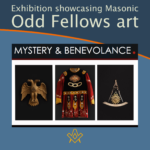 Exhibition showcasing Masonic, Odd Fellows art Art and education in the Hoyt’s newest exhibition, "Mystery & Benevolence: Masonic and Odd Fellows Art", explores the art and accessories of two fraternal organizations steeped in symbols and coded systems, from special handles, gestures and passwords to ritualized performances that probably come from the Middle Ages. |
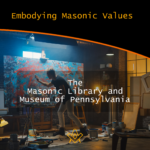 Since 2018, The Masonic Library and Museum of Pennsylvania’s “Embodying Masonic Values” open art competition has provided an opportunity for participants to explore Masonic values through art. Cash prizes are awarded to winners in five categories: Oil, Three-dimensional, Drawing and Print-making, Water-Based Medium and Digital Imagery. Most artwork is also available for sale. |
 Freemasonry in Popular Culture P4 - TV Part 4 of our series on Freemasonry in Popular Culture takes a look at some of the TV series that feature Freemasonry. With much intrigue into the supposed machinations of the Freemasons within business, politics and the police force, TV was a ripe medium for ridicule and sensationalist anti-Masonic propaganda. |
 Freemasonry in Popular Culture P3 - Comic Books and Graphic Novels Part 3 of our series on Freemasonry in Popular Culture takes a look at some of the comic books and graphic novels that feature Freemasonry. |
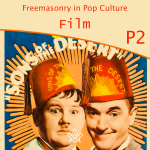 Freemasonry in Popular Culture P2 - Film Following on from Part 1 of Freemasonry in Pop Culture we take a look at Masonic depictions in film. |
 Freemasonry-membership is a mysterious NFT project that would be built across the Metaverse. Taking the idea from virtual lodges, the project is a huge mystery in terms of assets and value for the user. |
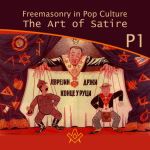 Freemasonry in Popular Culture P1 - The Art of Satire Freemasonry has been the subject of satire and lampooning since its inception in the 1700s courtesy |
 First Three Degrees of Freemasonry by Grant Wood For many of us, the name of the artist Grant Wood doesn’t ring any bells. But on a recent visit to the Grand Lodge of Iowa Masonic Library and Museums, I discovered a hidden gem – Grant Wood's vision of 'The First Three Degrees of Freemasonry'. |
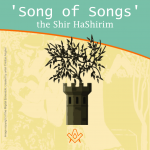 'Song of Songs' - the Shir HaShirim Freemason, composer and artistic director Laurențiu Ganea announces the premiere of his long-awaited composition of the 'Song of Songs' - the Shir HaShirim (also known as the 'Song of Solomon'). |
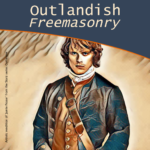 Martin Bogardus explores the Masonic characters and symbolism within the hugely successful 'Outlander' books and TV series. |
 The Masonic Art of Ari Roussimoff The Art, Masonic Aprons, and Magic of Ari Roussimoff - interviewed by Elena Llamas |
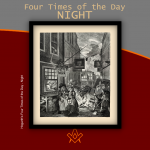 Hogarth's mockery of Freemasonry. A humorous depictions of life in the streets of London, the vagaries of fashion, and the interactions between the rich and poor. |
 This entertaining and infectious poem was written by an Ayeshire poet |
masonic knowledge
to be a better citizen of the world
share the square with two brothers

click image to open email app on mobile device


